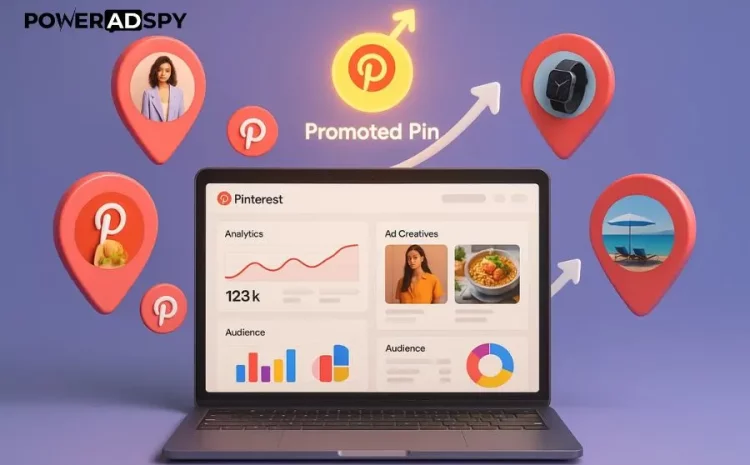How To Run Pinterest Ads That Work?
When people think of social media advertising, platforms such as Facebook, Instagram, and YouTube typically come to mind. But if you’re skipping Pinterest, you’re overlooking a goldmine. Pinterest isn’t just a place for recipe ideas, wedding boards, or interior décor; it’s a powerful visual search engine where users actively look for inspiration, ideas, and products to buy. That’s what makes Pinterest ads so effective.
Unlike other platforms, users on Pinterest are not just mindlessly scrolling. They’re planning, they’re searching, and most importantly, they’re ready to take action. With over 450 million monthly active users worldwide, Pinterest offers a unique opportunity for businesses to get in front of high-intent audiences. From fashion and food to travel and tech, brands across categories are running ads that don’t just blend in they stand out.
In this blog, we’ll walk you through exactly how to run ads that work. You’ll learn how to set up your first campaign, choose the right ad format, avoid common mistakes, and even spy on what’s working for your competitors.
Let’s dive in and unlock the full potential of Pinterest advertising.
You can Listen to our Podcast here,
Why Pinterest Ads Deserve Your Attention?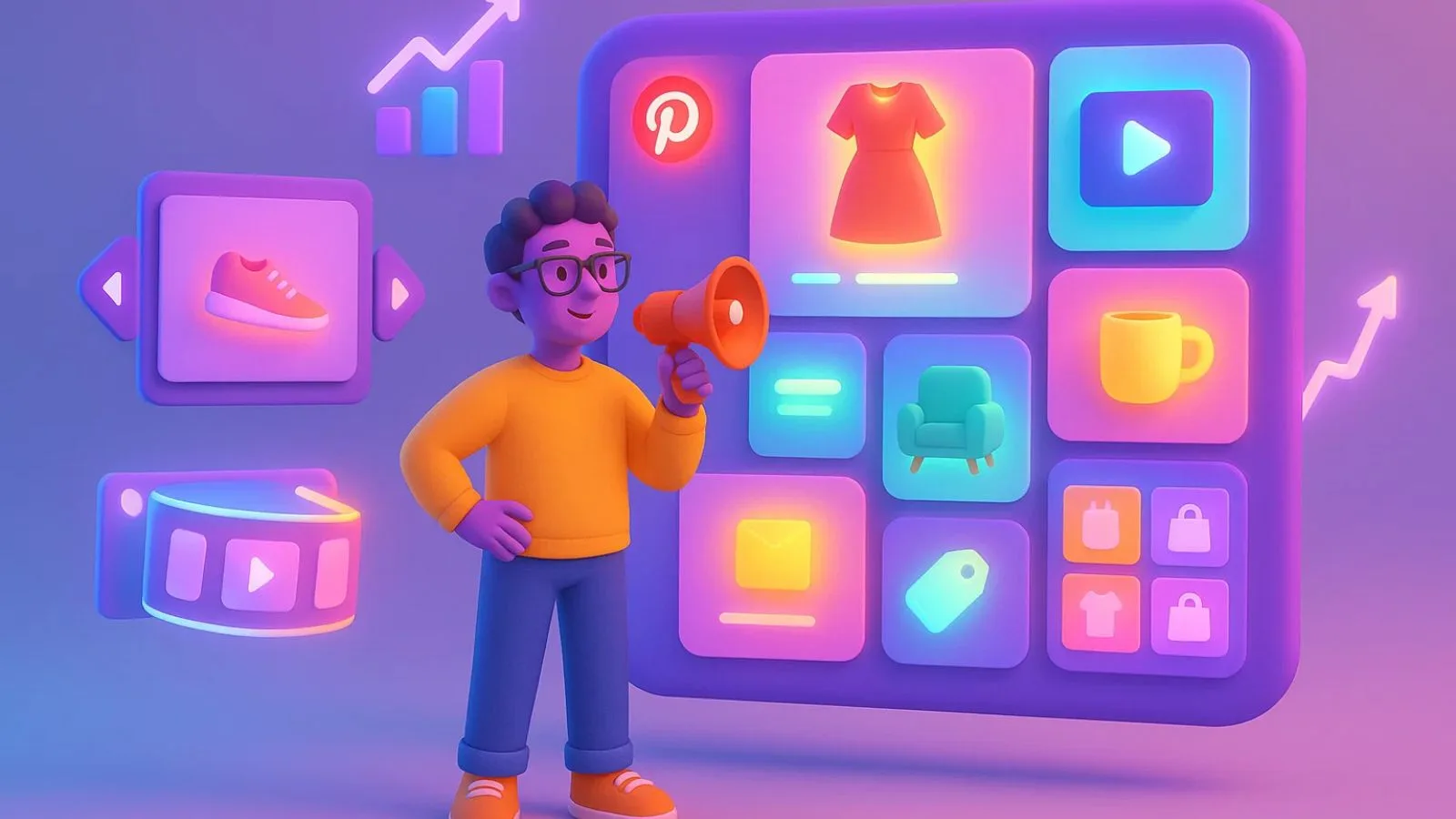
Most businesses treat Pinterest like the quiet kid in class, present, but easy to ignore. Big mistake. Pinterest isn’t just another social platform; it’s a visual search engine where users go to find inspiration and make choices. That’s exactly what makes Pinterest ads such a powerful tool for marketers.
Let’s look at some numbers. Pinterest users are planners; nearly 85% of weekly users say they use Pinterest to plan new projects. And here’s the kicker: 97% of the top searches are unbranded. That means even small businesses have a chance to get seen.
Plus, Pinterest users don’t just pin for fun. They click. buy. act. The platform drives more referral traffic to shopping websites than Twitter and Snapchat combined. That’s because Pinterest shortens the customer journey. People see something they love, click, and boom, they’re on your site.
With a wide range of ad formats and tools, businesses can tap into this engaged audience with laser precision. You can promote a single product, create a multi-image story, or showcase a how-to video that drives traffic, engagement, and conversions.
In short, Pinterest advertising isn’t just worth your time; it’s a smart move for any brand looking to grow.
Setting Up Pinterest Ads: A Step-by-Step Guide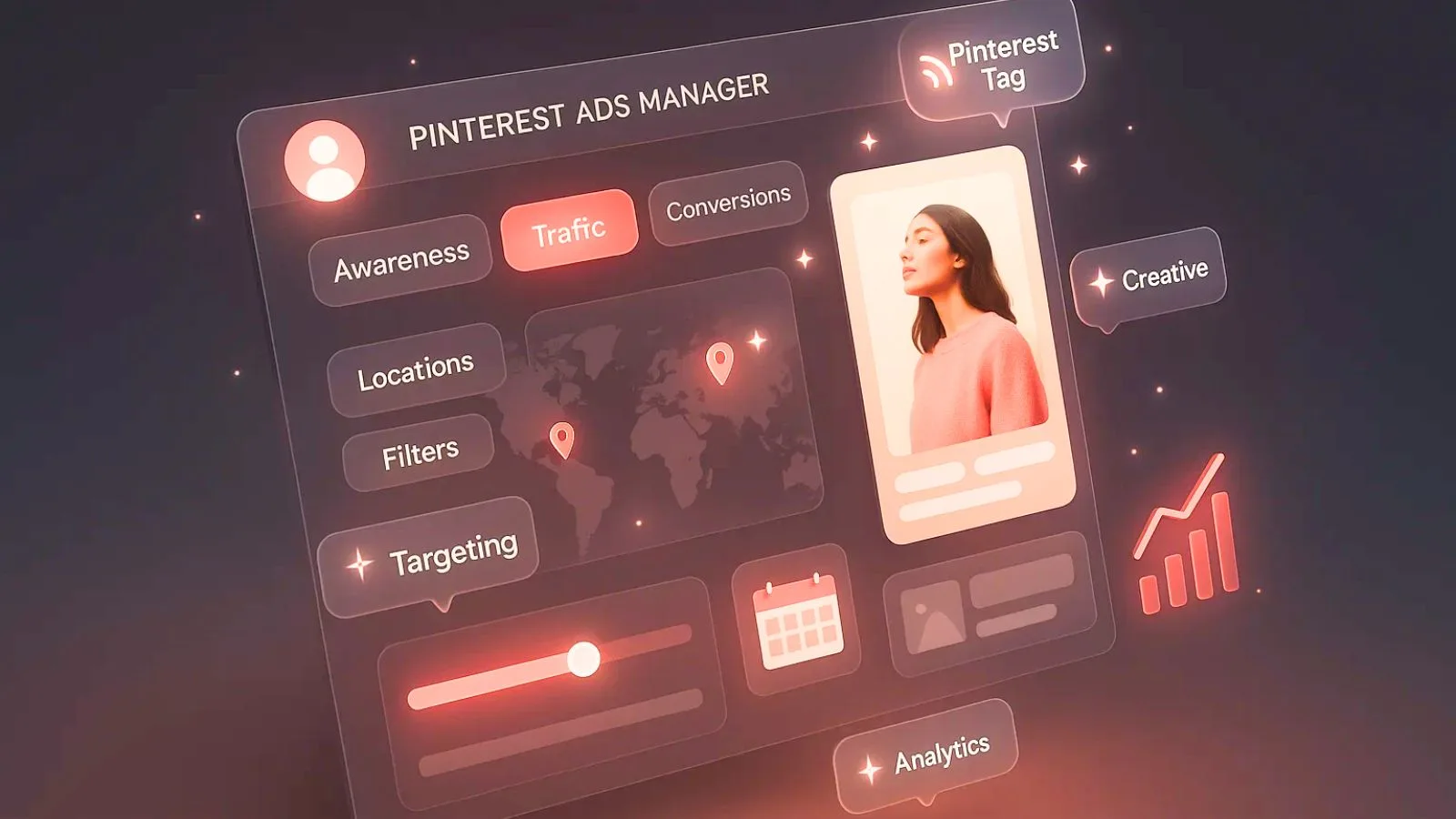
Getting Started with Pinterest Ads
-
Create a Business Account – Sign up at business.pinterest.com for free access to Ads Manager, analytics, and tools.
-
Install the Pinterest Tag – This tracker monitors actions like purchases, signups, or page views, helping you optimize and retarget.
-
Choose Your Objective – Pick from brand awareness, video views, traffic (consideration), conversions, or catalog sales.
-
Set Targeting – Reach people by interests, keywords, demographics, locations, or custom audiences (like site visitors or email lists).
-
Design Your Ad – Use vertical, high-quality images/videos with clear branding, strong CTAs, and concise text. Tools like PowerAdSpy can inspire creatives.
-
Set Budget & Schedule – Choose daily/lifetime budgets, set dates, and adjust bidding if needed.
-
Launch & Monitor – Track impressions, clicks, saves, and conversions in Ads Manager to refine campaigns.
Types of Pinterest Ads You Can Run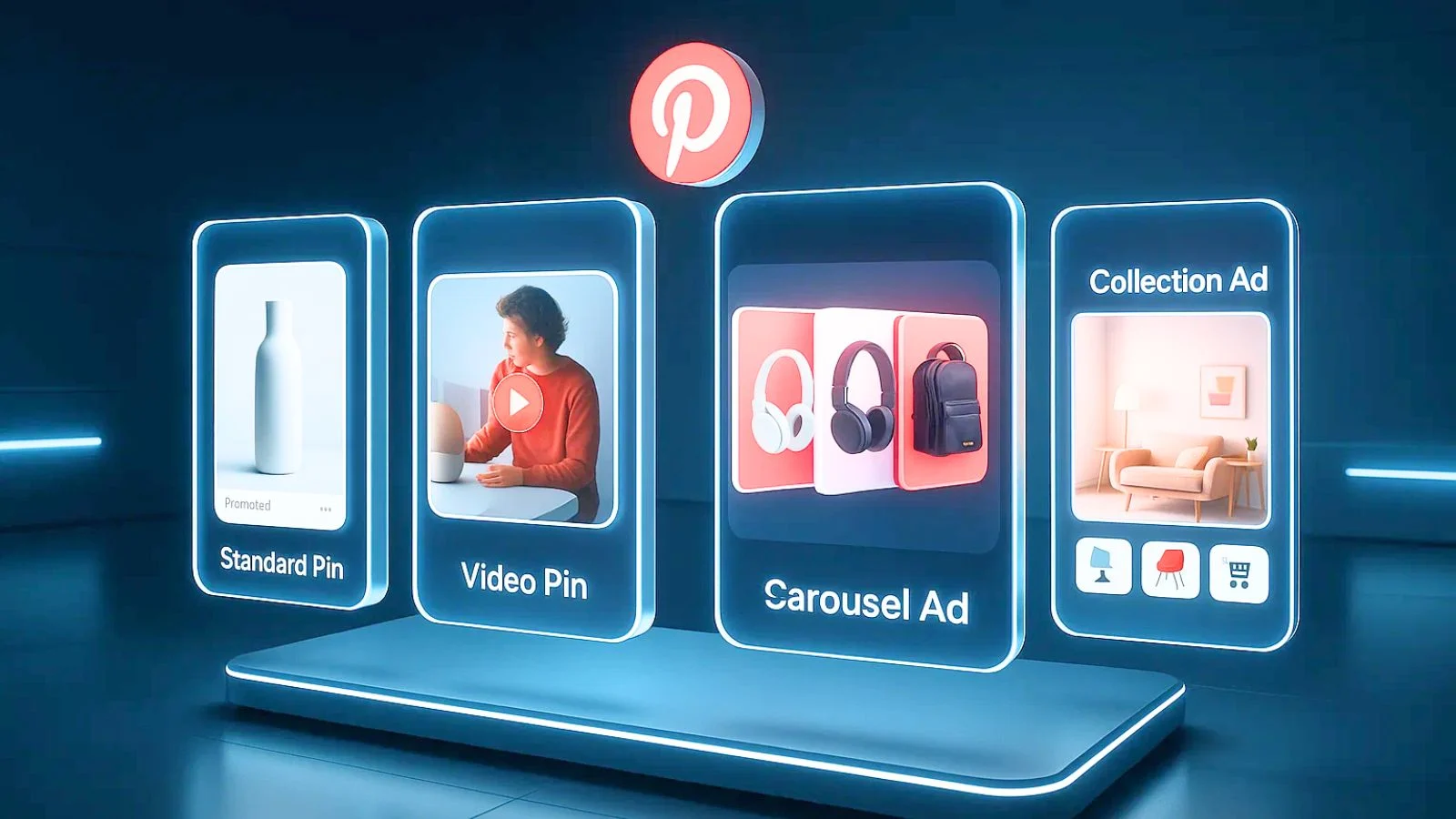
Understanding the different types of Pinterest ads helps you choose the format that best fits your campaign goals. Each ad type has unique strengths, and picking the right one can dramatically boost your results.
1. Standard Pins
These are simple image ads that look just like organic Pins, except they’re promoted. They’re great for driving traffic to a blog post, product page, or signup form. Use high-resolution visuals with minimal text to keep the focus on the image.
2. Video Pins
Video ads autoplay in users’ feeds, making them perfect for grabbing attention fast. You can tell a story, demo a product, or share a tutorial. Just keep it short and engaging; most top-performing videos are 6 to 15 seconds long.
3. Carousel Ads
These let you showcase 2 to 5 images that viewers can swipe through. They’re perfect for showcasing different features of a product, steps in a process, or a collection. Carousel ads on ads are perfect for boosting engagement and telling a visual story.
4. Shopping Ads
Shopping ads pull from your product catalog and show dynamic content based on user behavior. These are ideal for eCommerce brands looking to drive direct sales. With the right setup, Pinterest becomes a visual storefront for your business.
5. Collection Ads
When a user clicks on a Collection ad, they’re taken to a full-screen experience with the main asset (image or video) and a set of smaller, related product Pins. It’s an immersive format for showcasing multiple items in context, like a whole outfit or a room setup.
How to Make Your Pinterest Ads Stand Out?
Creating eye-catching Pinterest ads isn’t just about slapping on a beautiful image. It’s about combining creativity, strategy, and user behavior insights. Here’s how to make sure your ads truly grab attention and drive action:
- Use Vertical, High-Quality Visuals
Pinterest is a visual-first platform. Ads with a 2:3 aspect ratio perform best. Avoid horizontal images or anything too small. Sharp, well-designed vertical images are more likely to catch users’ attention and make them pause while scrolling.
- Keep Text Minimal
Pinterest recommends using minimal text on images. Let the product or message shine. When you do use text, make sure it’s easy to read on mobile and adds value like a benefit, discount, or quick tip.
- Add Your Branding
Subtle branding, like a logo in the corner or brand colors, helps build recognition. Keep it consistent across all your creatives. Users may not click right away, but repeated exposure builds trust.
- Write Clear, Compelling Descriptions
Your Pin title and description are just as important as your visual. Use action words and include relevant keywords (but naturally). This helps your Pinterest ads show up in search and related Pins.
- Use a Strong Call to Action (CTA)
Use a clear, strong CTA button that tells people exactly what action to take next. Examples:
“Shop now”
“Get the guide.”
“Save this look.”
A clear CTA boosts engagement and click-through rates.
Why PowerAdSpy Is a Game-Changer for Pinterest Ads?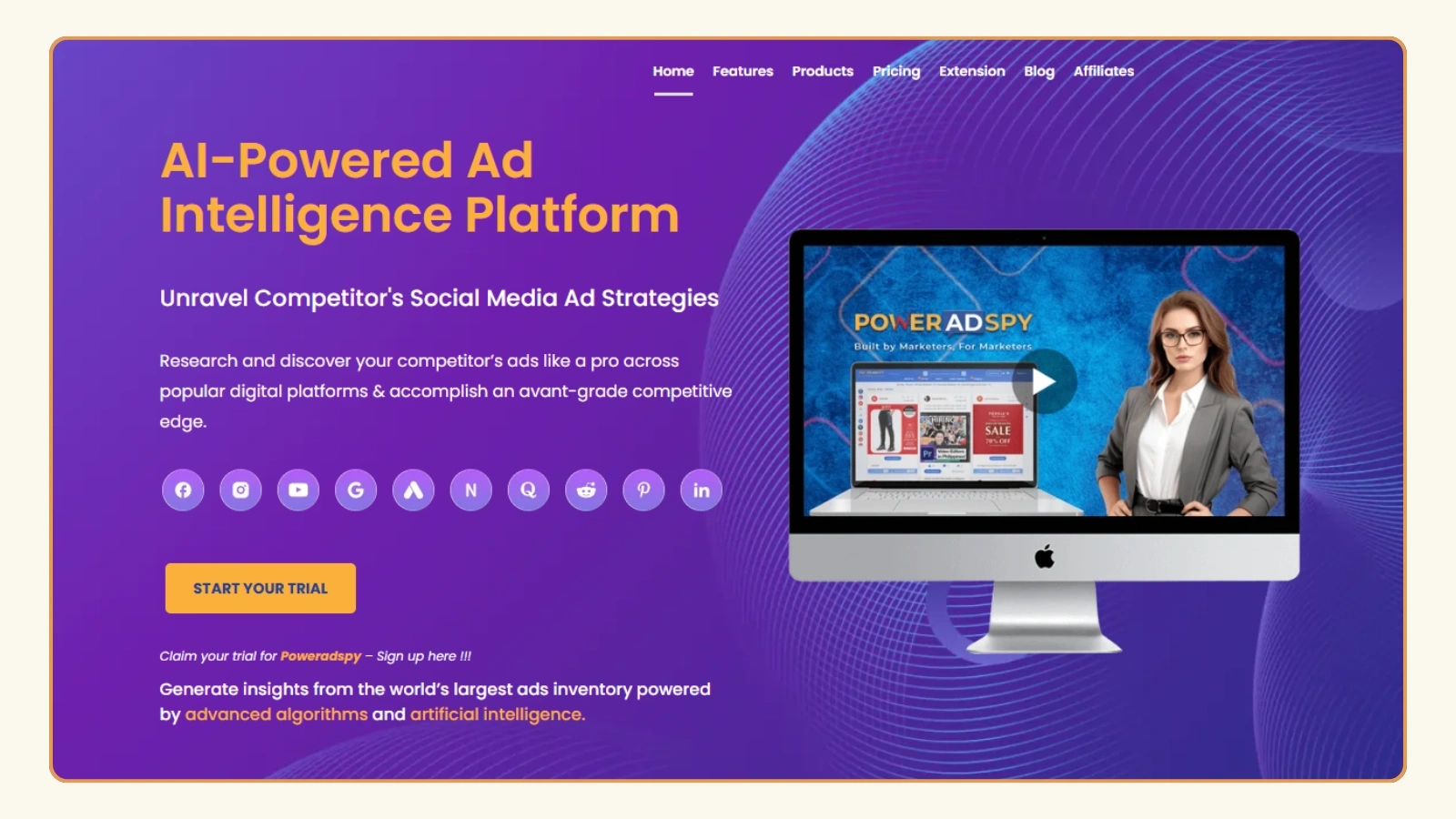
If you’re serious about making your Pinterest ads successful, one tool you can’t afford to skip is PowerAdSpy.
This powerful ad intelligence platform lets you spy on top-performing ads across Pinterest and other platforms. You get a behind-the-scenes look at what your competitors are doing, what kind of creatives they’re using, which keywords are performing best, and how they’re targeting their audience.
Try Now
Here’s how PowerAdSpy gives you a winning edge with ads:
- Discover Winning Ads: Instantly see what kind of ads are getting the most traction in your niche.
- Reverse-Engineer Strategy: Analyze your competitors’ Pinterest ads manager campaigns from visuals and copy to landing pages and targeting style.
- Creative Inspiration: Get inspired by the top-performing ad formats and visuals to improve your ad creatives.
- Data-Backed Decisions: Don’t waste your budget on trial-and-error. Let real ad performance guide your strategy.
No more guessing. No more starting from scratch. PowerAdSpy arms you with data so you can create Pinterest ads that convert faster and cost less.
Want to run Pinterest ads that work? Try PowerAdSpy and gain the edge your campaigns need.
Mistakes To Avoid When Running Pinterest Ads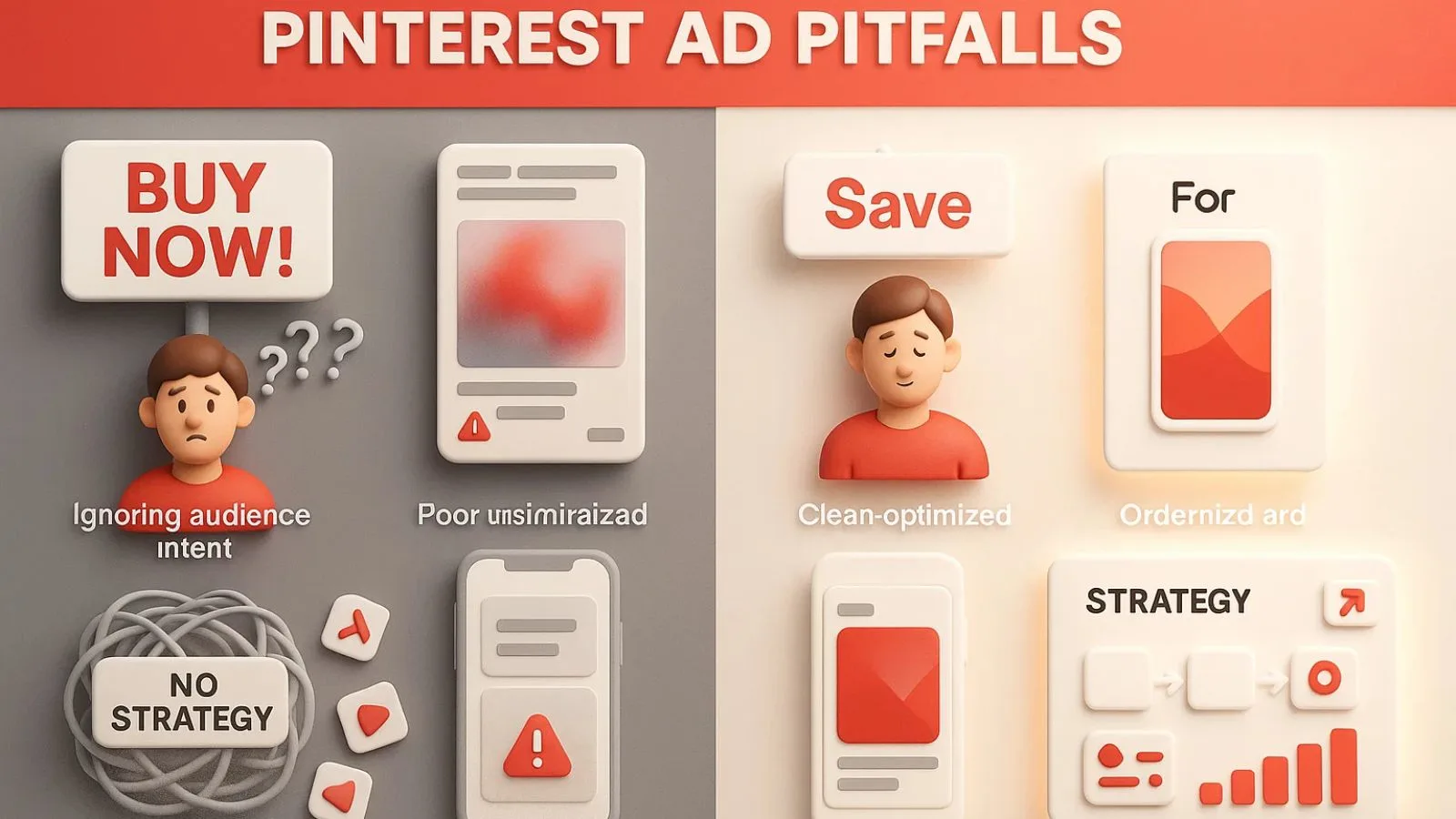
Creating Pinterest ads is one thing; making them work is another. Many marketers jump in with great designs and catchy headlines, but still don’t see the traction they expect. Often, the issue lies in a few common pitfalls that can easily be avoided.
- Ignoring Audience Intent
Pinterest is a discovery platform, not just another social media feed. People come here to explore ideas, get inspired, and plan purchases. So, if your ad feels too pushy or sales-heavy, it might not resonate. Instead, match your tone and content with their browsing intent. Subtle, value-driven messaging usually wins here.
- Poor Visual Hierarchy
Pinterest is visual-first. If your creative is cluttered, lacks focus, or uses unreadable fonts, users will scroll past. Ensure your text overlays are readable, your CTA is clear, and your images are clean and high-quality.
- Forgetting Mobile Optimization
Most Pinterest users browse from their phones. If your ad or landing page isn’t mobile-friendly, you’re losing potential conversions. Test everything—pin designs, copy, and website flow on mobile before launching your campaign.
- No Defined Pinterest Advertising Strategy
Randomly posting promotional pins without a structured plan is a recipe for wasted ad spend. You need best Pinterest advertising strategy that includes campaign goals, audience targeting, budget allocation, and performance measurement.
- Neglecting Analytics
Your Pinterest ads manager gives you access to detailed metrics. Use it! Track pin engagement, click-through rates, saves, and conversions. These insights help you refine your strategy and scale what’s working.
Avoiding these mistakes can dramatically boost the performance of your Pinterest campaigns and make every advertising dollar count.
Read More,
5 Excellent Tips To Create Best Pinterest Advertising (With Examples)
How to Use Pinterest For Ecommerce – 9+ Tactics to Boost Your Sales:
Pinterest Ads: Organic vs. Paid Strategy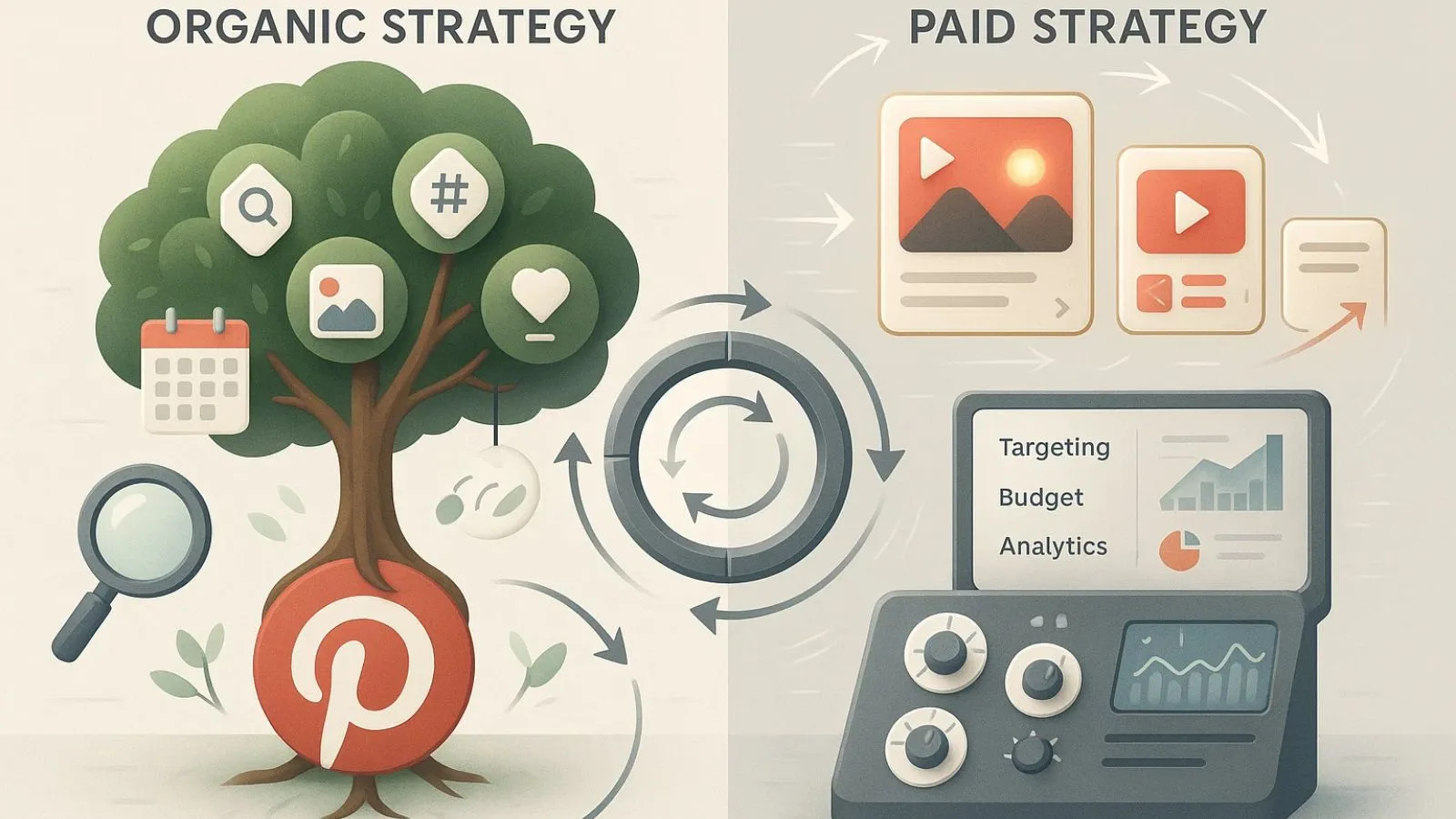
When it comes to Pinterest, both organic and paid strategies have their strengths. But to get the best results, it’s important to understand how each works and how they can support one another.
Organic Pinterest Strategy
An organic strategy means creating valuable, engaging content that users discover naturally on the platform. It requires consistency, visually appealing Pins, strong SEO (titles, descriptions, and hashtags), and smart use of boards.
The benefit? It builds trust. Organic pins can continue driving traffic and save for weeks or even months after posting. But it takes time to build momentum and reach.
Paid Pinterest Advertising
ads (the paid kind) allow you to target users by interest, keywords, demographics, or even the types of content they’ve saved. Paid ads give you faster results and greater control over placement, delivery, and performance tracking.
This is where tools like the Pinterest Ads Manager shine. It helps you build custom audiences, set campaign goals (like traffic or conversions), and track real-time analytics. Plus, you can experiment with different types of Pinterest ads, such as standard pins, carousels, and video pins.
Combining Both for Best Results
Instead of choosing one over the other, many marketers are blending both approaches. For example:
- Use organic pins to build a brand presence and earn followers.
- Use paid ads to push seasonal products, sales, or new content.
- Boost high-performing organic pins as paid ads to maximize reach.
This hybrid strategy creates a flywheel effect. Your organic content supports long-term brand building, while paid campaigns bring in short-term traffic and sales.
Conclusion: Master Pinterest Ads with a Strategic Edge
Pinterest ads are no longer just for recipe bloggers or craft shops; they’ve become a serious player in the digital marketing game. With the right strategy, design, targeting, and tools, businesses of all sizes can tap into a highly engaged, purchase-ready audience.
From selecting the right types of ads to using detailed audience targeting, every piece of your campaign should serve a clear goal. Don’t just post and hope; monitor your performance, refine your creatives, and optimize as you go.
Tools like PowerAdSpy can give you the edge you need by revealing what your competitors are doing, what’s trending, and how you can outsmart the crowd.
If you’re looking to drive traffic, boost sales, or grow brand awareness through Pinterest, now’s the time to get started.
FAQs About Pinterest Ads
- What makes Pinterest ads different from Facebook or Instagram ads?
Pinterest users arrive with a purpose; they’re actively seeking fresh ideas and creative solutions. This makes them more likely to engage with ads that inspire or solve a problem, compared to users passively scrolling on other platforms.
- How much do ads cost?
The cost depends on your bidding strategy and targeting. Typically, Pinterest ad costs range between $0.10–$1.50 per click or $2–$5 per 1,000 impressions. You can set daily or lifetime budgets to control your spending.
- What are the best types of ads for product-based businesses?
pinterest for eCommerce. Standard Pins and Shopping Ads work great. Video Pins are perfect for showcasing how-to content, tutorials, or brand storytelling. Test out different ad styles to discover which ones spark the most interest from your audience.

